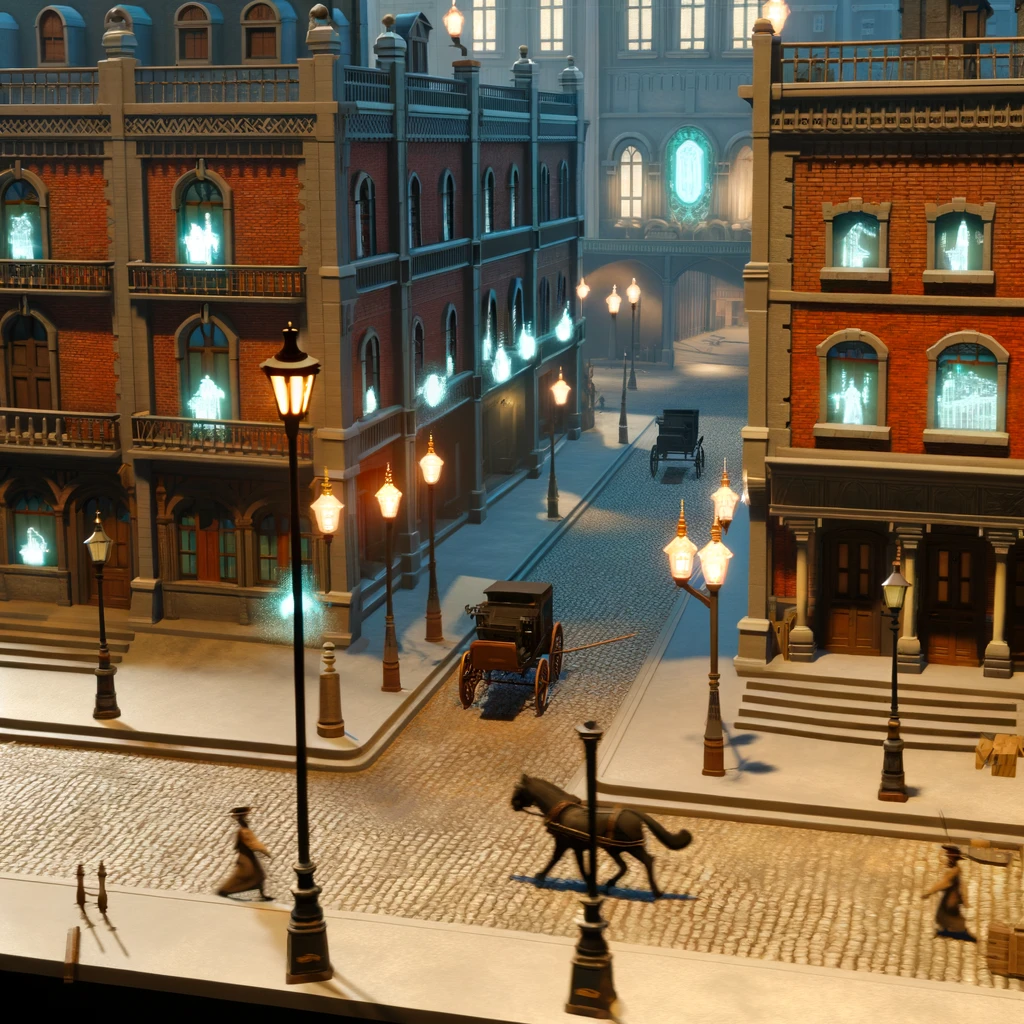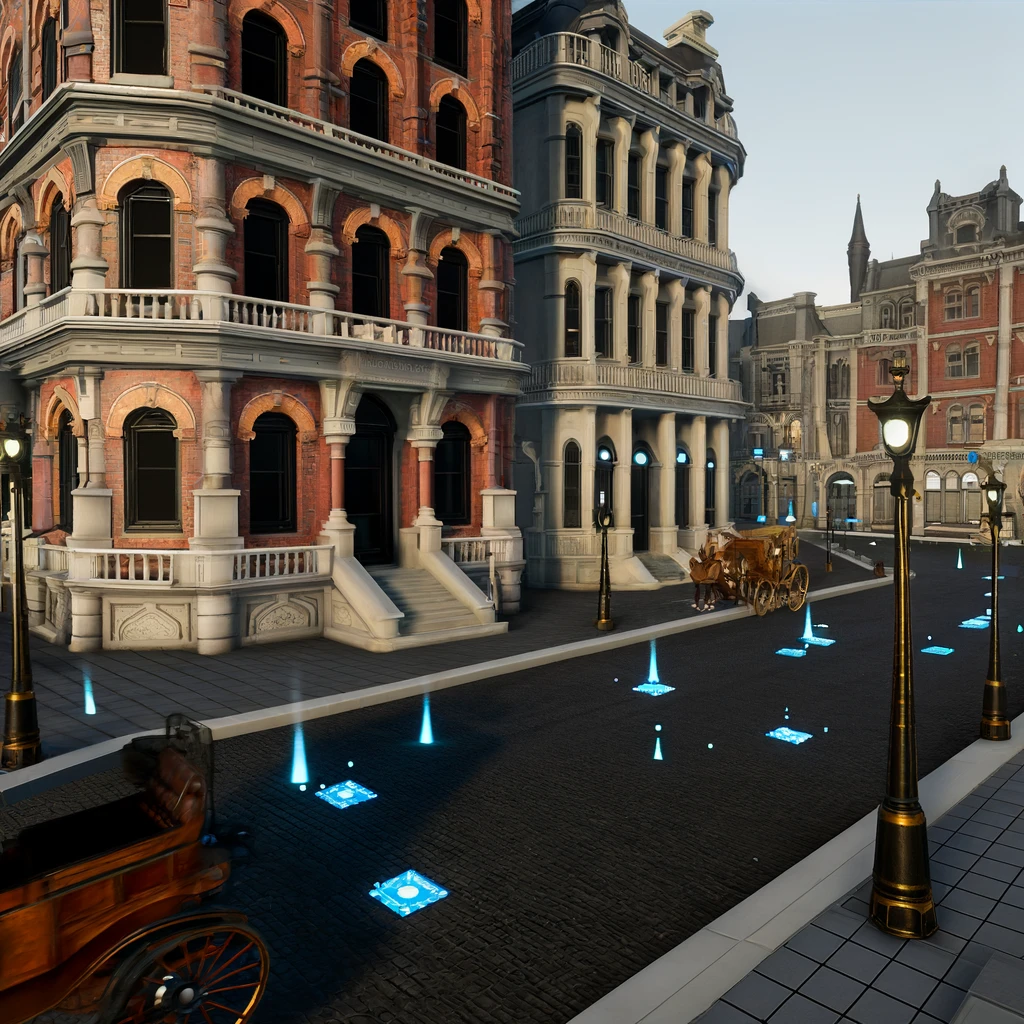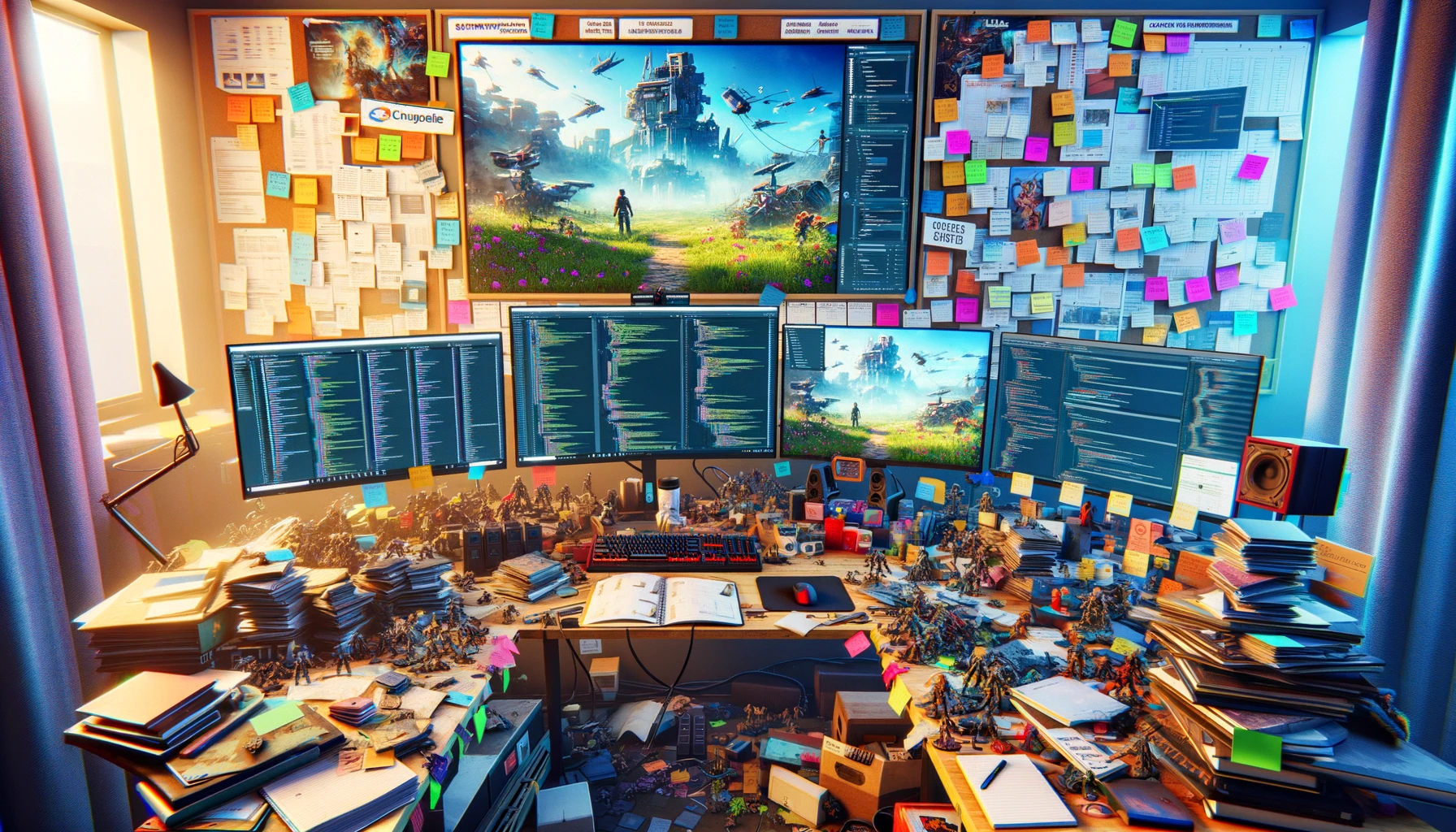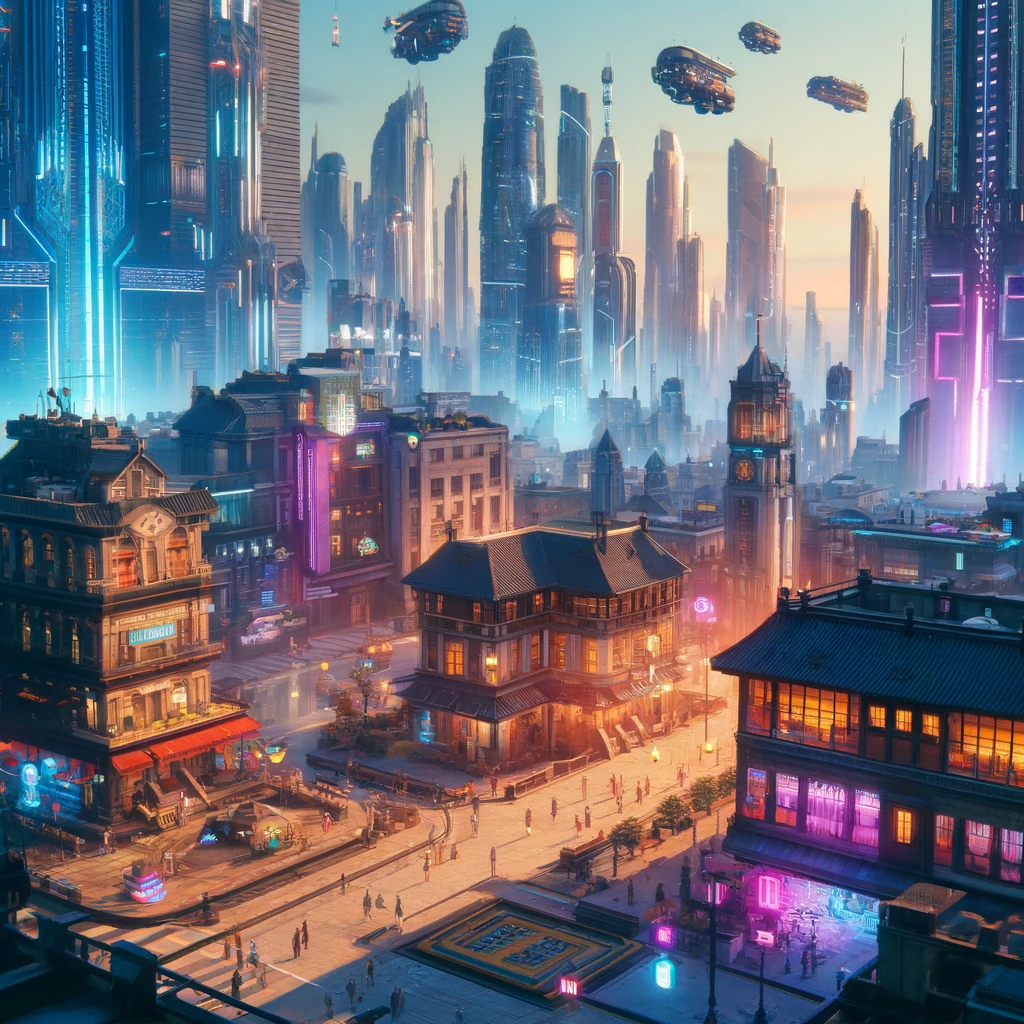For “Chronosynclastic Infundibulum”, envisioning a game level involves integrating the core mechanics of time manipulation into a rich, interactive environment that complements the narrative and visual style. Here’s a detailed concept for a level in the game:
Level Description: The Chronopolis Central Plaza
Setting:
- The level is set in the bustling central plaza of Chronopolis, a hub where different time periods converge. The architecture is a mix of futuristic skyscrapers and historical buildings, all interwoven with modern technology and ancient aesthetics. Neon lights contrast with the softer glow of gas lamps, and digital screens are mounted on stone walls.
Visuals:
- The plaza is visually divided into several zones, each representing a different era. There’s a Victorian section with cobblestone streets and horse-drawn carriages, a futuristic zone with hovering cars and holographic displays, and a present-day area with a blend of both styles.
- Dynamic lighting changes according to the time of day and the specific temporal anomalies occurring during gameplay. For example, a sudden shift to nighttime in one zone while it’s daytime in another due to a temporal glitch.


Gameplay Mechanics:
- Time Manipulation: Players can manipulate time within localized zones. For instance, they might rewind time in the Victorian section to solve a puzzle involving a misplaced historical artifact or fast-forward in the futuristic zone to bypass a yet-to-be-built barrier.
- Puzzles and Challenges: Each zone presents unique challenges and puzzles that require the use of time manipulation. For example, aligning historical events in the correct sequence to open a time-locked vault or using fast-forward to accelerate the growth of a plant that serves as a makeshift ladder.
- NPC Interactions: Players interact with NPCs from various time periods, gathering clues and completing quests that impact both the past and the future. These interactions are crucial for unraveling the main mystery of the level.
- Combat and Stealth: Depending on the player’s choices, they might engage in combat with time-displaced adversaries or use stealth to navigate through areas patrolled by anachronistic guards.
Objectives:
- The main objective could involve stabilizing a fractured time stream in the plaza, requiring the player to solve puzzles in multiple time zones and negotiate or combat with NPCs affected by the anomalies.
- Side quests might include helping a displaced historical figure return to their correct time or collecting rare temporal artifacts scattered across the zones.
Sound Design:
- Each temporal zone has its own ambient sounds that reflect its era, plus unique sound effects for time manipulation like the ticking of clocks speeding up or reversing.
- Background music changes dynamically as the player moves between zones, blending elements of classical, electronic, and modern genres to match the surroundings.
This level design for “Chronosynclastic Infundibulum” would not only showcase the game’s unique mechanics and narrative but also provide a visually and mechanically rich experience that encourages exploration and strategic thinking. Would you like to explore more about how specific features or elements could be implemented in this level?

